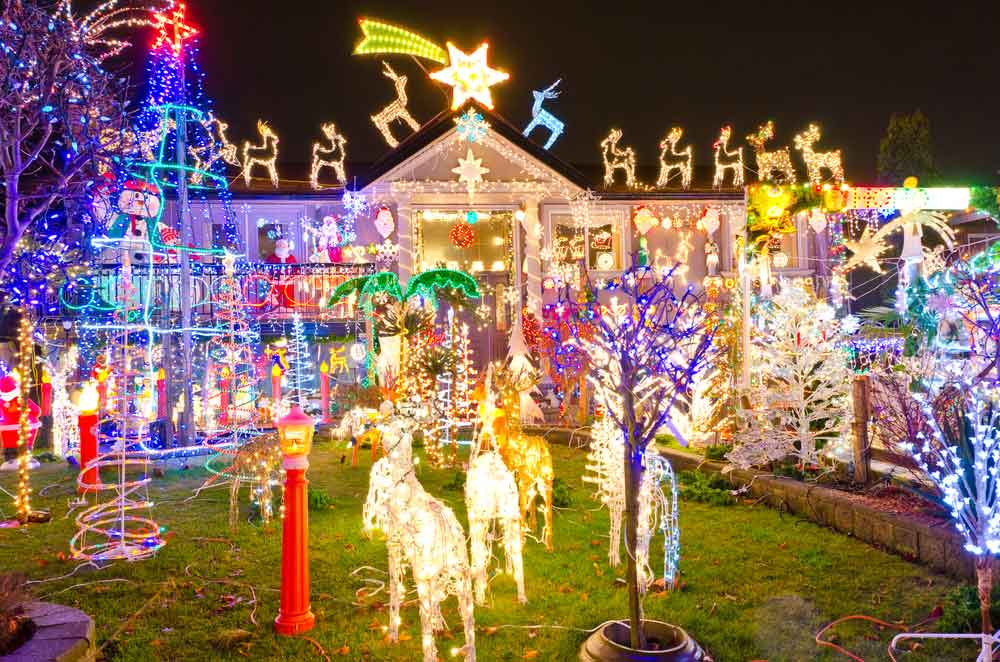Hawaii Energy’s “12 Days of Energy-Saving Tips” This Christmas 
Nothing gets us in the yuletide cheer like spending time with family, enjoying the neighborhood’s twinkling Christmas lights or feasting on auntie’s homemade gingerbread cookies. However, when we realize how much our electric bill is a month later things may not be so merry.
Hawaii Energy, the ratepayer-funded energy conservation and efficiency program for Maui, Hawaii and Honolulu counties, prepared “12 Days of Energy-Saving Tips” that can help you save energy and money on your electric bill this holiday season.
DAY 1: Buy ENERGY STAR® Electronics
Are electronics on your family’s wish list? If so, consider purchasing ENERGY STAR® electronics. Products can range from televisions and DVD players to cordless phones. They use far less energy than non-certified products. To learn more, visit ENERGY STAR’S website: www.energystar.gov/products/certified-products and view the “electronics” section.
DAY 2: Keep Oven Doors Closed
You’ll probably have family over during the holidays and some may want to peek in the oven to see what’s cooking. However, tell them to keep the oven door closed. Ovens lose about 25 degrees each time they’re opened and require additional energy to bring the temperature back up.
DAY 3: Turn Off the Air Conditioner
Leave the air conditioner off. Our Hawaii “winters” won’t last long so bundle up and enjoy the chilly weather before summer rolls around. However, some days are just plain hot. If you’ve been relying on an old air conditioner, consider upgrading to a new ENERGY STAR® model. Hawaii Energy provides a $50 rebate and will recycle the old working one for free.
DAY 4: Try Alternative Cooking Methods
A 16-pound turkey can take up to four hours to cook in a conventional oven. Rather than using all that electricity, consider cooking it for less than two hours outdoors kiawe-style. That smoky, succulent turkey will take half the time to cook but still leave guests fully satisfied.
DAY 5: Install a Timer
Plug indoor and outdoor lighting displays into timers that can be programmed to run in the evening hours and turn off by the time you go to bed. Or simply unplug your lights when not in use.
DAY 6: Use Less Lighting Fixtures
If your Christmas tree lights are already decked out, extra lamps or permanent lighting fixtures may not be needed. The Christmas tree alone can be the showpiece and illuminate the room.
DAY 7: Save Energy When Doing Laundry
Spills and stains are inevitable during the holidays. Wash full loads in cold water rather than hot since it requires far more electricity to heat. Skip the dryer. Hang clothes outside and put the trade winds to good use.
DAY 8: Unplug Electronics Not in Use
Most electronic devices use electricity even when the power is turned off – called a “phantom” or “vampire” load. Be sure to unplug any laptops, video games, coffee pots and cell phone chargers not in use.
DAY 9: Switch to LED Christmas Lights
If you haven’t already switched to LED Christmas lights, consider making the change. LEDs use about 70 – 80% less energy than typical incandescent Christmas lights. Plus, LEDs come in different shapes, colors and sizes so let your creativity run wild rather than the cost of your electric bill.
DAY 10: Consider Fiber Optic Decorations
Fiber optic trees and decorations are great for saving energy. They use a single light bulb located at the base of the unit to light up the entire decoration.
DAY 11: Limit Christmas Tree Lights
Rather than adding more lights to make your Christmas tree glow, consider enhancing its visual appeal with mirrored ornaments, tinsel or any other reflective items to make it sparkle.
DAY 12: Walk and Enjoy Christmas Lights
Walk. Burn a few calories with the family. What could be better? Well, maybe taking a walk around your neighborhood to check out everyone’s Christmas lights on their houses (hopefully they’ve followed “Day 5” and installed a timer).
For more energy-saving tips this holiday season and beyond, visit HawaiiEnergy.com.



